We may receive a commission when you use our affiliate links. However, this does not impact our recommendations.
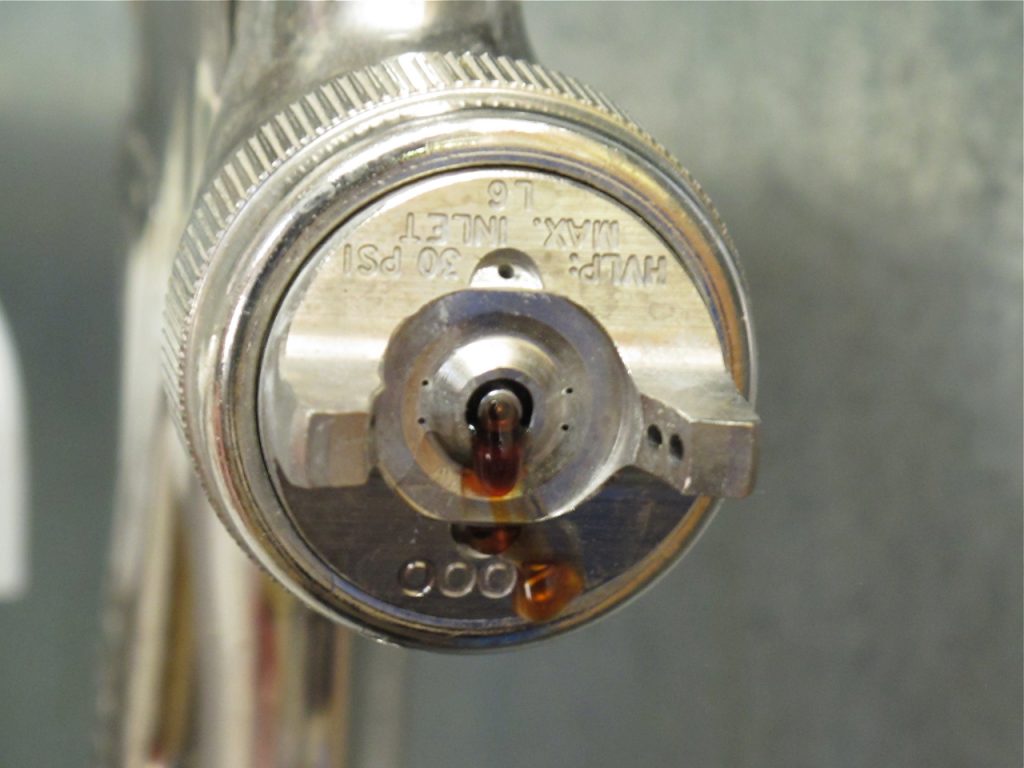
Over half a year lacquer had dried in my spray gun to the consistency of thick molasses.
Lacquer is such a wonderful and versatile finish. I think every professional I’ve talked to who has used lacquer and other finishes (with good exhaust, of course) loves lacquer. There are lots of reasons for this, including reduced runs and sags, relative ease of control in different weather conditions with the solvents available, relative ease of repair, and lacquer’s excellent rubbing qualities. But here’s a plus you may not have thought of.
A few years ago I had a running tussle with a professional who insisted that lacquer had to be cleaned out of the spray gun at the end of every workday. I disagreed, because I had often left lacquer in my spray gun for a week or two without problems.
One of the characteristics I’ve noticed about finishers and refinishers as a group is that they (we) tend to believe that whatever way we have discovered works is THE way and the only, or at least best, way. Nothing wrong with this, but it does lead to expressing absolutes when they aren’t warranted.
So here’s the stupid thing I did. At some point last fall I must have been spraying lacquer, and typical of me, I hung the spray gun up when I was finished, thinking I would be doing more spraying soon. So there was no reason to clean the gun (which amounts to nothing more than running lacquer thinner through it).
Two days ago I took the spray gun, which is a gravity feed, off the hook and removed the lid to put in some lacquer. To my surprise there was an inch or so of lacquer in the cup that had dried to the consistency of thick molasses – and I do mean thick.
I thought, OK, this is an extreme case of leaving lacquer in the gun overnight, so I’ll photograph it and do the cleaning with the least amount of work to prove that I don’t even need to take the gun apart to clean it.
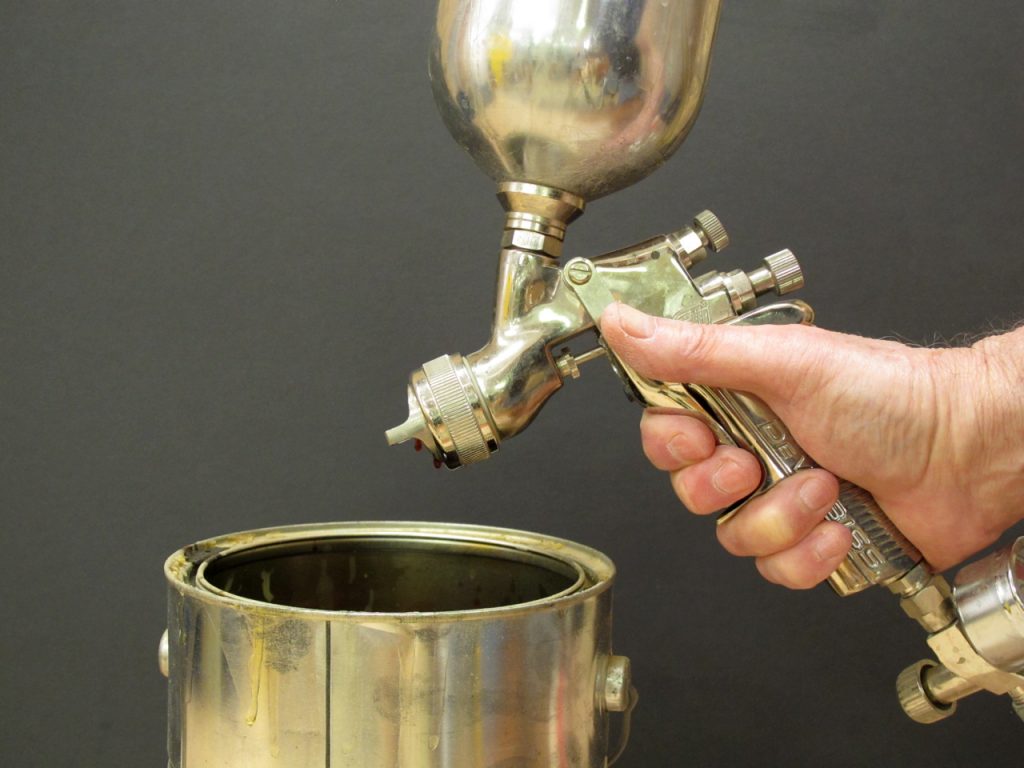
Slowly the lacquer thinner I added thinned the lacquer so that more came out of the gun.
I poured out as much of the thick lacquer as I could, then added an inch of lacquer thinner and started pulling the trigger. At first, small bubbles of lacquer oozed out and just stayed there at the tip of the fluid nozzle. So I left the thinner in for an hour then tried again. A little more lacquer came out.
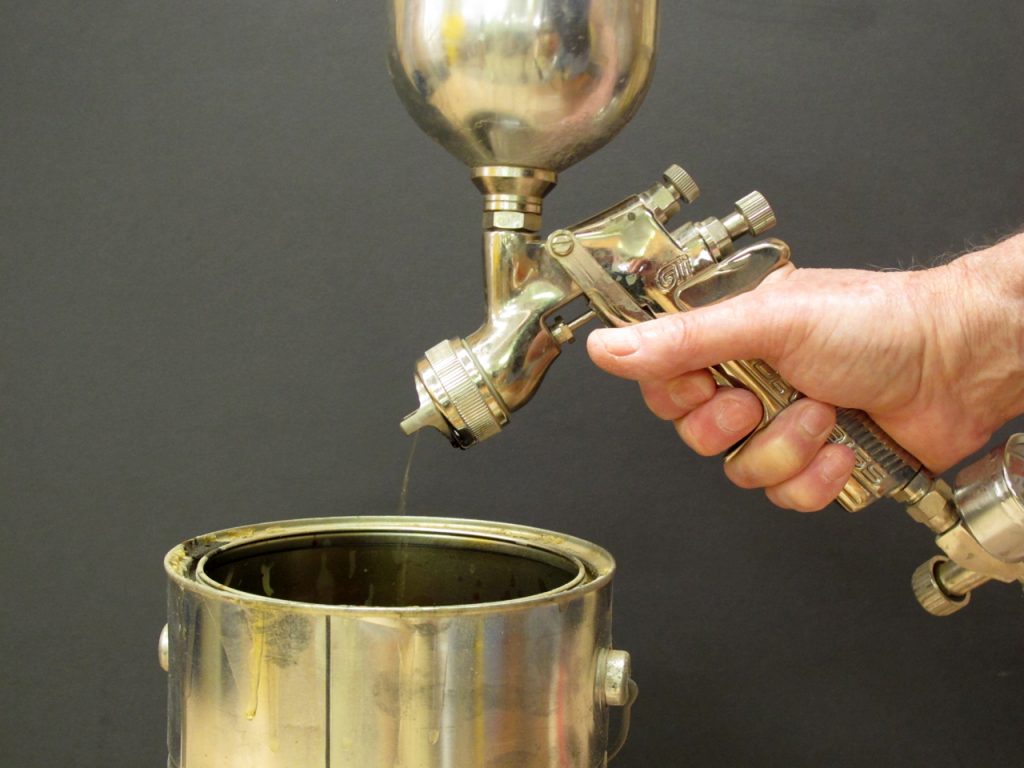
After a little more time, the lacquer became thinned enough so it came out of the gun in a weak stream.
I didn’t hook the gun up to an air source, which I knew would speed the process, because I wanted to see if just adding the thinner alone would work.
As I continued to pull the trigger, slowly emptying the pathway from the cup to the tip, the lacquer began thinning out until only the thinner came out in a stream that indicated the channel was clean.
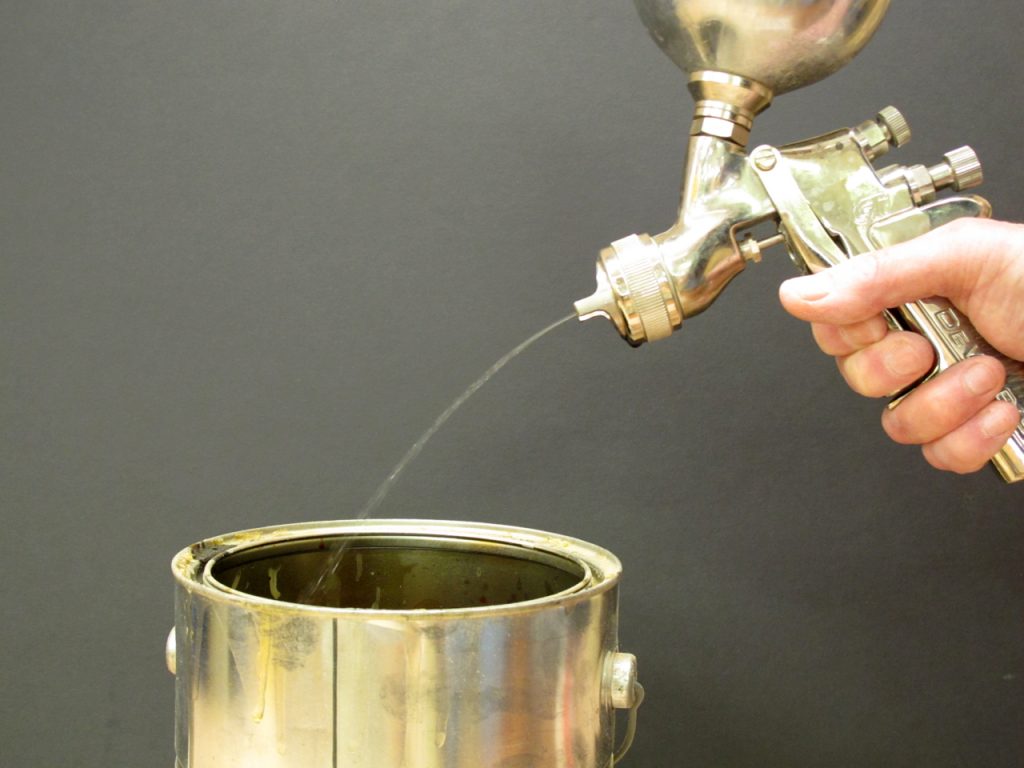
Finally, the stream of lacquer thinner strengthened enough to indicate that the pathway from the cup to the tip of the fluid nozzle was clean.
I then put some lacquer in the gun and sprayed my project without problem.
I’m quite sure I could do the same with shellac and alcohol, but I wouldn’t leave other finishes in a gun for very long because they could harden and be very difficult or impossible to clean.
Here are some supplies and tools we find essential in our everyday work around the shop. We may receive a commission from sales referred by our links; however, we have carefully selected these products for their usefulness and quality.









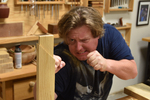

When I was a young apprentice, I was forced to clean all the tools and put everything away at the end of each work day. The nasty old man drilled this into my head , and every day the tools were ready to go at the start of the day.
Take care of your tools and they won’t let you down. All my various types of Delvilbis guns look almost as good as the day I bought them 40+ years ago and have sprayed thousands of gallons of catalyzed industrial urethanes. After each job I clean inside and out along with re oiling the packings. They as well as me are now retired and starting to dabble in woodworking. Please don’t encourage people to be lazy with their equipment.
Hi Bob – A lesson I learned the hard way – I left some lacquer in my gun for about a week. The cup had some sort on non-stick coating. The lacquer ate the coating and ruined the cup. It was an Earlex 5500, which is a popular set up for hobbyists. I have since upgraded to a fuji system, I don’t think that gun coated.